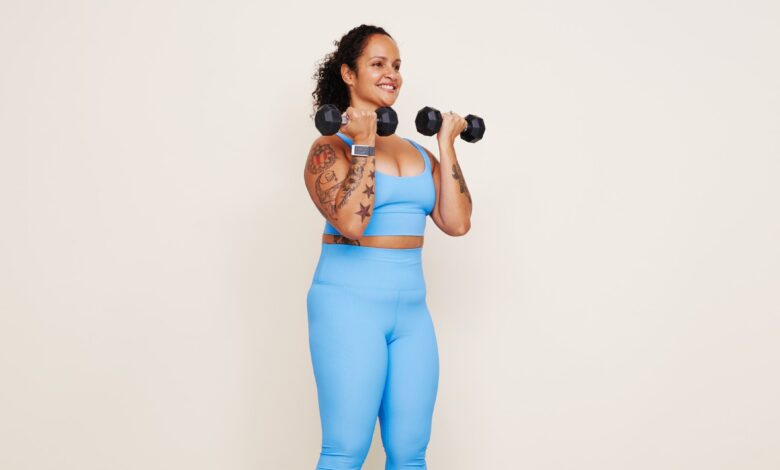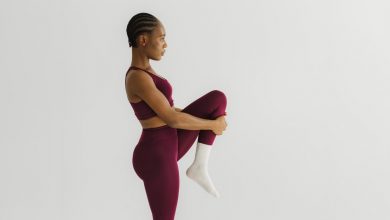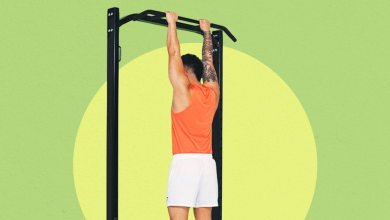A Full-Body Workout That’ll Ease Beginners Into Strength Training

Anyone new to strength training can benefit from an awesome beginner dumbbell workout that hits all the major muscle groups with simple, effective movements. And that’s exactly what we have right here: A four-move routine you can do at home to master the basics—no intimidating equipment or exercises needed.
In this full-body dumbbell workout, the focus is on compound exercises (which work across multiple joints to target large muscle groups) rather than isolation moves (which hone in on small muscle groups and work across one joint). They’re great for beginners because they’re more functional—they have direct carryover to the actions we perform in everyday life—and they’re more efficient, since you’re hitting multiple areas at the same time.
For instance, think about a bent-over row: It involves movement at both your elbow and shoulder joint, which engages muscles in your arms as well as your back, ACSM-certified personal trainer Asher Freeman, CPT, creator of the Nonnormative Body Club in Philadelphia, tells SELF. Contrast that to an isolation exercise like a biceps curl or a triceps extension, which involves movement only at the elbow joint to target your upper arms.
Getting that bigger bang for your buck is especially important for beginners just starting a workout routine. In order to really boost your strength, you should train each muscle group twice a week, Freeman says. But taking enough rest between sessions—at least 48 hours before working the same area—is crucial for beginners to allow your muscles to recover.
“So if you’re only working out two or three times a week, and you want to get stronger, that means you should be working all of your muscles every time that you [exercise],” Freeman explains. And that’s where this total-body beginner dumbbell workout comes in clutch.
Another plus of this routine is that it helps new exercisers practice different full-body movement patterns that are common in loads of resistance-training programs. The march with dumbbell hold, for instance, is centered on the plank, and the single-arm bench-supported bent-over row is all about pulling. The alternating reverse lunge involves both a squatting motion (like you’d do in a goblet squat or dumbbell squat) and hinge (like the deadlift); the Arnold press focuses on the pushing pattern (similar to an overhead press or a bench press).
One pro tip for any beginner trying this workout: Pay attention to how hard you’re working, and strive for a level that’s between a 6–7 out of 10 in terms of intensity, Freeman advises. In other words, challenge yourself—but don’t go all out. This is not a high-intensity interval training (HIIT) workout! Maintaining proper form is way more important than pushing yourself too hard.
Final thing. Before starting this routine (or any in your workout plan), take 5 to 10 minutes to warm up your muscles. This doesn’t have to be super formal: You can do it by performing a dynamic yoga flow you’re familiar with, trying this five-move stretch sequence, or simply by dancing. The goal is just to get blood flowing throughout your body, Freeman says.



